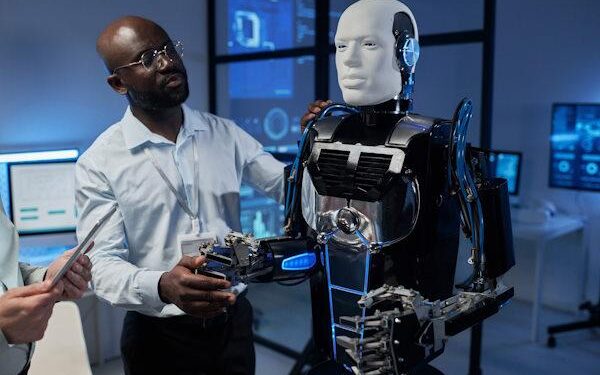Scientists at the Massachusetts Institute of Technology are making significant strides in the development of artificial intelligence designed specifically for humanoid robots, CBS News reports. Combining advanced machine learning techniques with cutting-edge robotics, MIT researchers aim to create robots capable of performing complex tasks and interacting seamlessly with humans. This breakthrough promises to accelerate the integration of humanoid robots into everyday environments, from manufacturing floors to healthcare settings, marking a pivotal step forward in the evolution of AI-driven robotics.
MIT Scientists Reveal Breakthroughs in AI Algorithms Driving Humanoid Robot Mobility
MIT researchers have made significant progress in crafting advanced AI algorithms that enable humanoid robots to navigate complex environments with unprecedented agility and precision. These breakthroughs center around adaptive learning models that allow robots to dynamically interpret sensory information and adjust their movements in real-time. By integrating deep reinforcement learning with sensor fusion techniques, the team has effectively taught robots to predict balance shifts and respond seamlessly to unexpected obstacles.
Key innovations include:
- Real-time gait adaptation for diverse terrains
- Enhanced proprioceptive feedback loops
- Hybrid control systems combining model-based and data-driven approaches
- Collaborative multi-robot learning environments
| Algorithm Feature | Benefit | Impact on Mobility |
|---|---|---|
| Dynamic Terrain Mapping | Enhanced environment understanding | Smoother navigation over uneven surfaces |
| Predictive Balance Control | Prevents falls and stumbles | Increased operational stability |
| Multi-Sensory Integration | Combines vision, touch, and motion data | Improved real-time response |
Inside the Lab Developing Human-Like Interaction and Decision-Making for Robots
At the forefront of robotics innovation, MIT scientists are crafting AI systems that empower humanoid robots with remarkably human-like cognitive abilities. These advancements focus on enhancing the robots’ capacity to interpret social cues, engage in meaningful conversations, and make complex decisions akin to how humans process information in real time. Leveraging neural networks and reinforcement learning, the researchers train robots to adapt dynamically to unpredictable environments, simulating human intuition and emotional intelligence.
The lab employs a multifaceted approach that integrates:
- Natural Language Processing: Enabling robots to comprehend and generate contextually relevant dialogue.
- Sensor Fusion: Combining visual, auditory, and tactile data for nuanced situational awareness.
- Behavioral Modeling: Mimicking human social interactions through advanced pattern recognition.
| Capability | Current Accuracy | Target Accuracy |
|---|---|---|
| Emotion Recognition | 78% | 95% |
| Decision-Making Speed | 0.8 sec | 0.3 sec |
| Contextual Dialogue | 82% | 98% |
Experts Recommend Ethical Frameworks to Guide AI Integration in Robotics
As AI technologies rapidly advance, leading experts emphasize the necessity of clear ethical standards to ensure responsible integration of artificial intelligence into humanoid robotics. These frameworks are designed to address critical challenges such as privacy, accountability, and the societal impact of autonomous decision-making systems. Industry pioneers advocate for transparency in algorithmic processes and insist on the implementation of robust safety protocols that prevent unintended consequences in real-world applications.
Several key principles have emerged from recent ethical discussions, guiding developers and policymakers alike:
- Human-Centric Design: Prioritizing the well-being, dignity, and autonomy of individuals interacting with robots.
- Fairness and Inclusion: Avoiding biases in AI behavior that might perpetuate discrimination.
- Accountability: Establishing clear lines of responsibility for AI-driven actions.
- Long-Term Safety: Continual evaluation to anticipate and mitigate emerging risks.
| Ethical Principle | Key Focus | Implementation Strategy |
|---|---|---|
| Transparency | Explainability of AI decisions | Open-source algorithms and documentation |
| Privacy | Protecting user data | Strict data encryption and consent protocols |
| Safety | Preventing harm to humans | Continuous testing & fail-safe triggers |
| Accountability | Clear responsibility assignment | Legal frameworks and compliance audits |
Closing Remarks
As MIT scientists continue to push the boundaries of artificial intelligence and robotics, their work on developing AI for humanoid robots marks a significant step toward more adaptive and capable machines. While challenges remain, these advancements promise to enhance the ways robots can assist in everyday human environments. CBS News will keep following this evolving story as researchers strive to bring the future of humanoid robotics closer to reality.































